Now that we are nearly halfway through the 2016 investment year, let’s assess “where we are”. The simple fact is that most traders operate on a day-by-day or week-by-week basis[1], while investors generally think in terms of months or quarters. However, we run the risk of not seeing “the forest for the trees” when we operate that way. That is why taking a look at “the big picture” [many refer to this as looking down from 35,000 feet up… which allows us to see the entire” forest” and helps us gain helpful perspective].

For either investors or traders, keeping the “Big Picture” in mind is crucial. Otherwise we lose our perspective.
As of the close of trading on May 31st, the S&P 500 was up (on a total return basis) by 3.6% Year-to-Date (YTD). One consequence of this is that this maturing “Bull Market” has now been sustained for over 86 months (it finished its 87th on 6/9).
Let’s put this “Bull Market” in a larger context:
1) Of the eleven Bull Markets since 1950, this is only the second on to last as long as 87 months (statistics from BTN Research).
2) During those five months, there have been many ups and downs (rather than steady trending);
3) Price charts of major indices have regularly shown price action contained within a “box” (ie. a range) … moving up and down within said box;
4) Those observations are substantiated by the fact that, although there have been more “up” days in the S&P 500 (54 days)… the number of “down” days have been almost as numerous (46). (Source: BTN Research)
While most traders prefer a “trending market”, as we see above, ours has been “choppy”. Illustrating what a “trending” market looks like… consider these contrasting twelve-month periods:
1) 3/01/08 to 2/28/09 (loss of 43.3% on a total return basis):
2) 3/01/09 to 2/28/10 (53.6% total return gain)
Recently, we have heard countless references to “reaching a new high” in U.S. stocks… more often than not in the context of prior highs being “Resistance” through which indices have had trouble moving. You can see the S&P 500 (as of 6/10) below… not yet having broken through resistance from Spring of 2015:
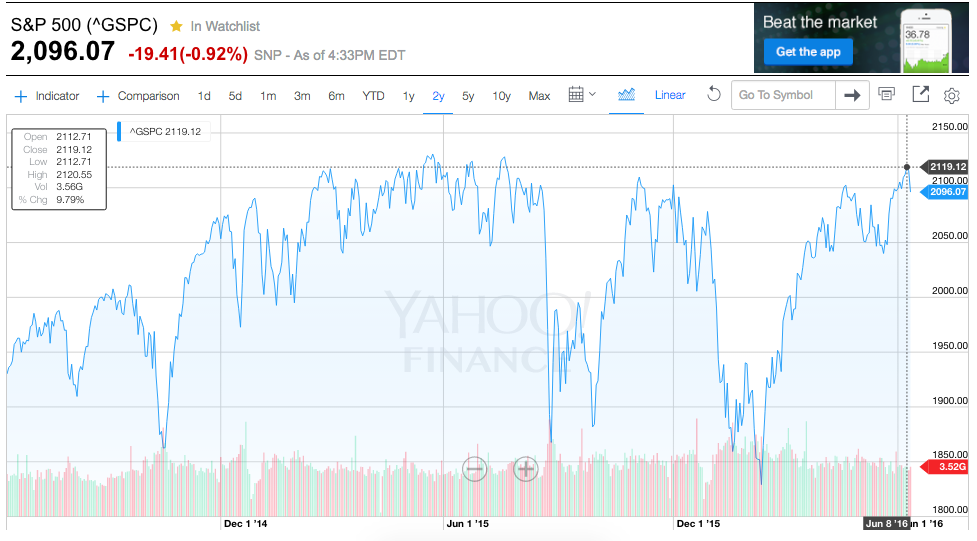
This graph of the S&P 500 Index shows the recent price action vis-a-vis prior highs from over one year ago.
However, we should keep in mind that mere price alone only offers us a partial picture of our investment return. A far superior metric of investment success is “total return” … which includes as dividends and distributions garnered through S&P 500 stocks.
On that basis, consider the following (all data from Dan Wiener of Investment Advisers):
On a total return basis, the S&P 500 has hit nine “all-time” highs during 2016! The most recent such high came on June 8th.
Since the market bottomed in March of 2009, the S&P 500 Index (ie. price) has appreciated by an impressive 213%;
However, total return from S&P 500 stocks has amounted to an even more impressive 265%!!
Here is one slightly different way of appreciating the magnitude of the difference between “price return” on the Index and “total return” from the constitute stocks:
The extra 52% gain reflected in “total return” amounts to an additional $52 in your portfolio for every $100 you invested in the market in March of 2009!
Since (as we have written about in prior articles) the U.S. Federal Reserve continues to be (for better or worse) a primary driver of the financial markets, let’s take a look at
employment and inflation, which are (supposedly) the two data points that most concern Federal Reserve officials:
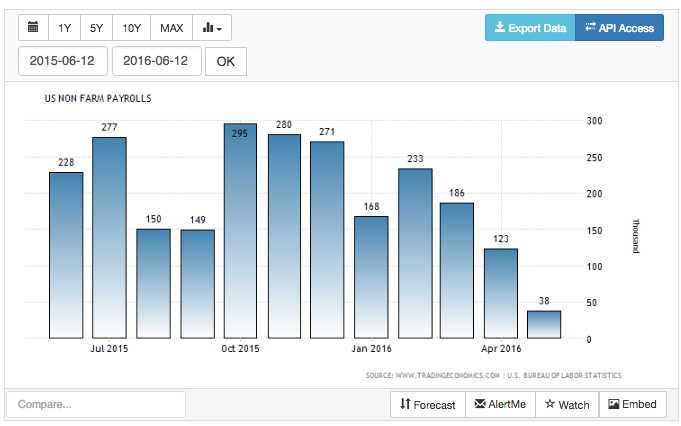
This Bar Chart of the NonFarm Payroll data for the prior twelve months shows a declining trend. [Source: http://www.tradingeconomics.com/united-states/non-farm-payrolls]
To those who are unaware of the complexities (and machinations) of the formulae used by the U.S. Bureau of Labor Statistics to calculate the monthly “Unemployment Rate” figure, it seems counter intuitive that the “Non-Farm Payroll” (ie. new jobs created) metrics would be trending downward while the “Unemployment Rate” was also trending lower. However, one of the “wild cards” that makes analysis of these figures more challenging is the magnitude of monthly changes in categories such as:
1) those who are jobless,
2) those looking for a job (and therefore “available for work”)
3) those who stop looking for a job (and are therefore “not in the labor force”.
One “take away” from these realities is that one should never place much credence on “headline” numbers regarding employment/unemployment. They can be very deceiving.
Something that is not at all deceiving … but rather pause for significant concern… is the continuing propensity of those within the United States to fail short of what financial experts consider a “benchmark” savings rate. Current reports from the Federal Reserve reveal that … of the 5,700 Americans recently interviewed about their financial situation, almost one-half of them (50%) do not have even $400 set aside in cash for emergencies. What that means is that those folks, when faced with an unexpected expense, would have to borrow money or sell an asset or some sort (such as going to the pawn shop) to cover the unexpected expense!!!!
Of course, that propensity for a low savings rate can be accounted for by numerous variables – from the much higher percent of workers within “lower-paying” jobs (born out by BLS data), being raised in a “consumer-oriented” society[2], and being burdened by such things as the mounting levels of student debt carried by graduates from our colleges and universities… not to mention by the absolutely abysmal interest rates available as a result of the ZIRP Policy (“Zero Interest Rate Policy”) instituted by the U.S. Federal Reserve!
Now let’s look at inflation. The Federal Reserve’s stated “goal” for inflation is 2%. Through the end of April of this year, consider this statistic:
A study of U.S. Inflation on a monthly trailing Year-over-Year (YoY) basis since 4/30/12 shows that the Consumer Price Index (CPI) has reached 2% during only three of those 48 months!!
Since we live in a global economy, the economic trends and forces at work elsewhere impact the United States. In that light, consider this parallel statistic for the Eurozone[3]:
On April 30th of this year, it was reported that YoY inflation in the Eurozone was a negative 0.2%… with the report on 5/31 showing a slight improvement of negative 0.1% (Source: Eurostat). That is precisely why so many economists are worried about deflation…. and also contributes to the talk we are hearing more frequently regarding “negative interest rates”.
INVESTOR TAKEAWAYS:
There are several key points above that are sufficiently worthy to integrate and the incorporate in the ways we view our activity within the investment world:
1) Keep your eye on the “bigger picture”… not just the day-by-day fluctuations within the financial markets…
2) In particular, try to insulate yourself from the nearly mindless cacophony of less than brilliant insights that can be heard throughout the trading day on all of the standard “financial” networks. As often as not, what we hear is someone’s opinion… or (worse) something bordering on a promotion of a particular stock, fund, or ETF.
3) As pointed out in the past several articles, such stations often over-hype quotes or sound bites from this or that Federal Reserve official that (usually) represents something resembling the most infamous reference from Act V, Scene V from William Shakespeare’s Macbeth.[4]
4) Beware of the “headline number” from U.S. government reports. I cannot possibly recount the innumerable times I have been traveling and heard one or another major network news show report a “headline” number in a way that actually made me doubt my own understanding of the real implications of that report – until I later take time to check on the report’s details and confirm that the broadcast news was (at best) misleading.
5) Never ever[5] believe what a politician says about a report once it becomes public. Politicians pay speechwriters and consultants large salaries to (in essence) put their “spin” on the facts in ways that impact public opinion in their favor[6].
6) Try your best at all times… no matter what… to “save” at least 5% of your income. Such saving discipline will prove immeasurably helpful whenever you have an emergency… and will prove particularly fortuitous as such savings build and compound over the years to enhance your retirement years!
DISCLOSURE:
The author has investments in funds and ETFs that reflect the performance of the S&P 500 Index. He has also made a discipline of saving as much as possible through employer-provided retirement plans, as well as Traditional and Roth IRA accounts. Nothing in this article is intended as a recommendation to buy or sell anything. Always consult with your financial advisor regarding changes in your portfolio – either subtractions or additions.
FOOTNOTES:
[1] At least that’s true for all but the “scalpers”, who tend to trade anywhere between hour by hour and 5 minutes by 5 minutes.
[2] Those of us in the “Baby Boomer” generation were raised on kids shows that peddled sugary cereal and lots of toys (including classics like G.I. Joe, Barbie, Hula Hoop, Slinky, Jack in the Box, Etch-a-Sketch, Squirt Guns, Mr. Potato Head, and the Duncan Butterfly and Imperial Yo-Yo Set!!!

Baby Boomers loved the “Etch-A-Sketch” and “Mr. Potato Head” when they were growing up. Of course, they were immortalized in “Toy Story”.
[3] Composed of 19 European nations.
[4] With all due respect to Dr. Janet Yellen and her Federal Reserve colleagues, the quote from Macbeth is as follows: “it is a tale told by an idiot, full of sound and fury… signifying nothing!” When you go back and review the most recent three articles, the reason I suggest this will become obvious:
https://www.markettamer.com/blog/who-guards-our-money; https://www.markettamer.com/blog/from-war-bonds-to-dots-the-evolving-federal-reserve; https://www.markettamer.com/blog/what-if-you-were-chair-of-the-fed .
[5] … ever, ever… Never!!
[6] … while (simultaneously) providing them some ‘wiggle room’ to deter successful legal suits challenging their veracity
Related Posts
Also on Market Tamer…
Follow Us on Facebook

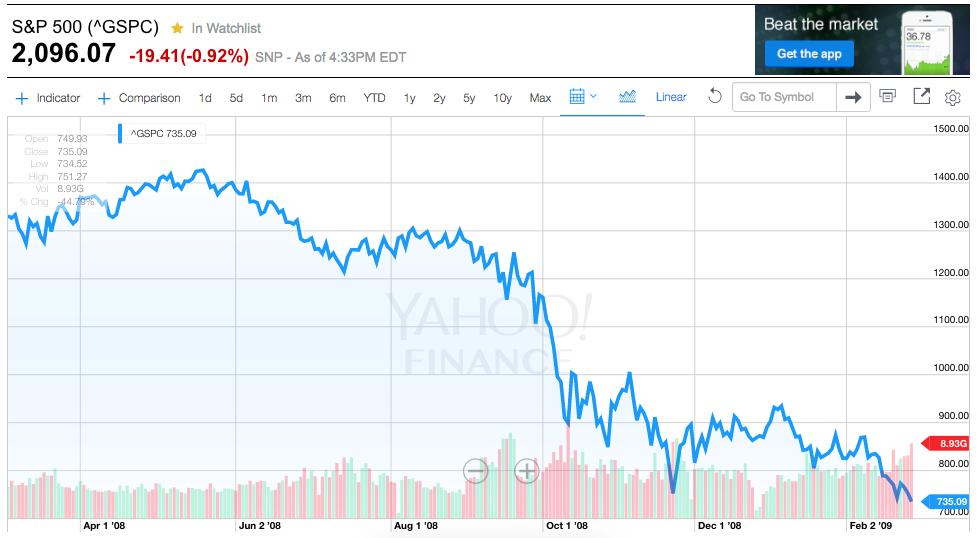
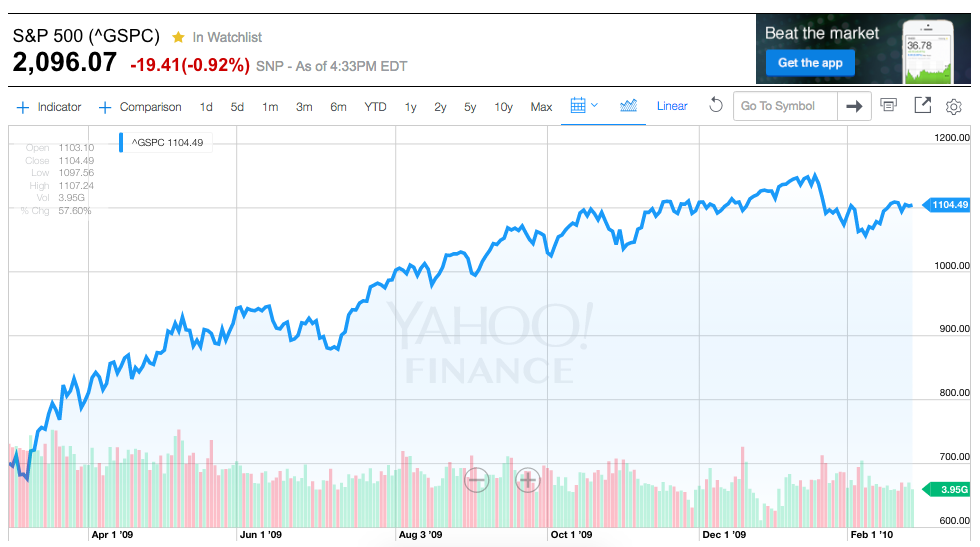
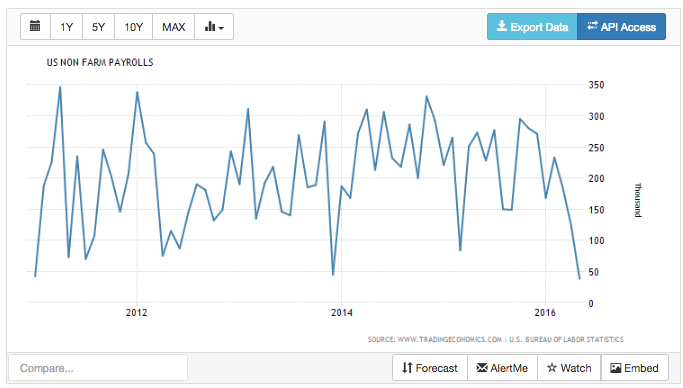
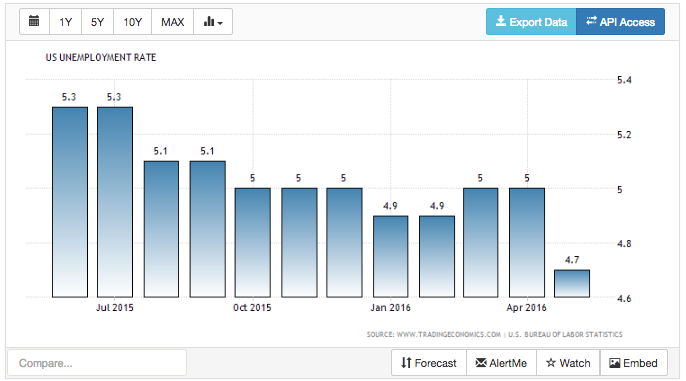
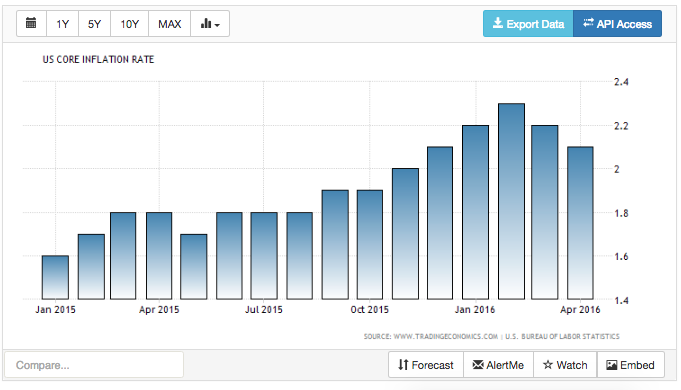


 Why Investors Were Upbeat About Chevron Stock on Tuesday
Why Investors Were Upbeat About Chevron Stock on Tuesday
